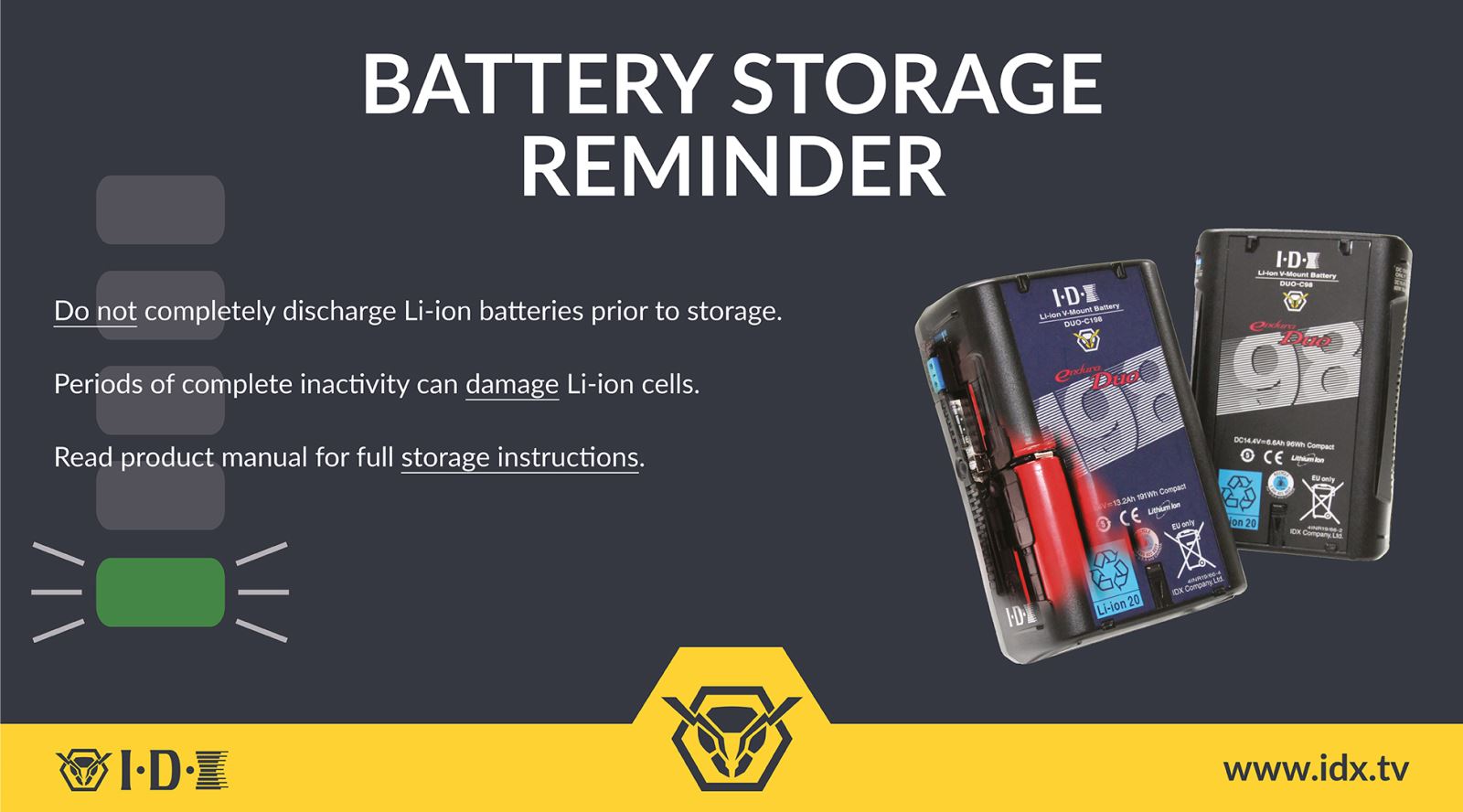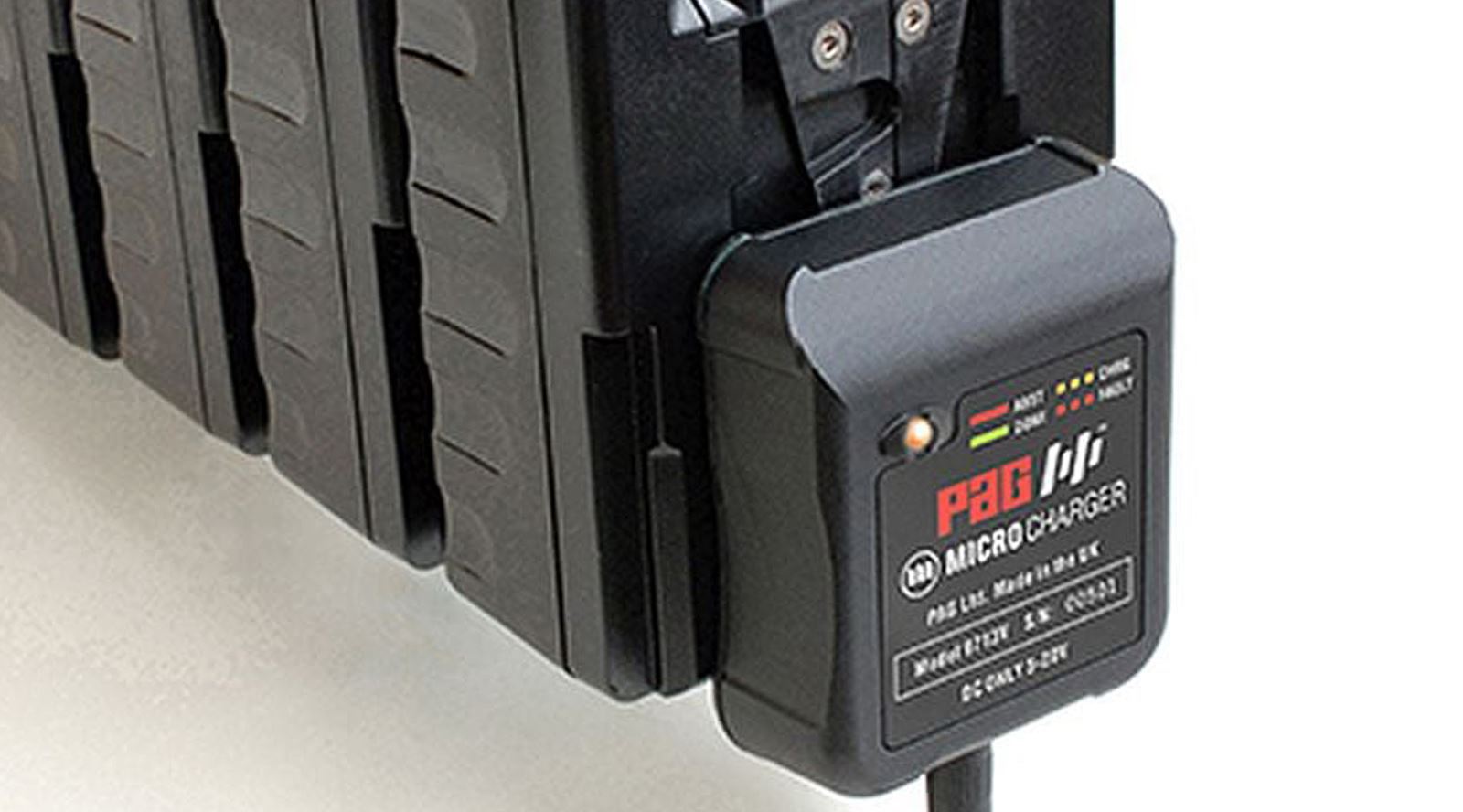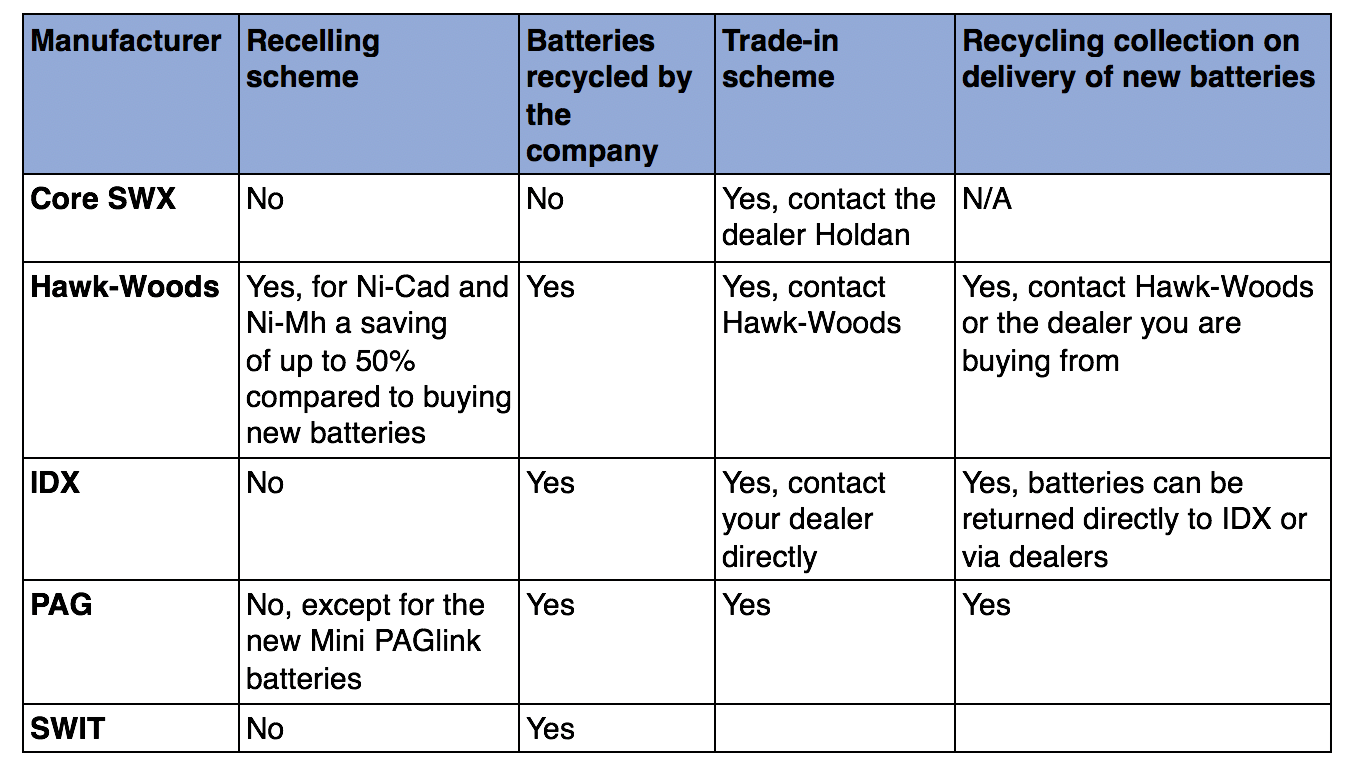Battery recycling and safe storage
Batteries are an essential part of the TV/film industry, including everything from the rechargeable ones that power cameras to disposables used for lapel microphones. We need to know both the best ways to store and cycle our rechargeable batteries between use and how to dispose of all batteries safely once they reach their end of life. Batteries contain a variety of potentially dangerous metals and chemicals, so must be disposed of properly; many of the materials can be reused.
Domestic single-use batteries are very easy to recycle as any business that sells more than 32kg of batteries per year is legally required to have a recycling collection point in store (see www.gov.uk/battery-waste-supplier-reponsibilities and www.valpak.co.uk/compliance/batteries).
These collection points may also take other commonly used rechargeable batteries, such as those used in mobile phone and laptops.
Car batteries can be disposed of at garages, scrap metal facilities and household waste recycling centres.
For more information on where to recyle a particular item, see: www.recycle-more.co.uk/where-to-recycle or www.recyclenow.com/local-recycling to find your nearest locations.
Some of the camera battery manufacturers distributing in the UK offer discounts for trade-ins or enable you to recell their batteries, which can be a cheaper option than buying brand new batteries. Manufacturers do not recommend recelling Lithium Ion (Li-Ion) batteries though, because this can compromise their integrity and safety during flight. The following table lists all the schemes of which we are aware - if you are a battery manufacturer and would like your scheme to be added, please get in touch.
Extending a battery's life and battery storage
To extend the life of a Li-Ion battery (i.e. provide more cycles), it’s generally recommended only to charge the battery to 80% capacity or not to fully discharge it during use.
For long-term storage there are some general principles:
- Never store batteries fully discharged or under 10% overall charge as it can be difficult to recover them.
- Never store batteries in a fully charged state as this can reduce their overall life.
- Leave the battery disconnected from the charger and any equipment.
- Store batteries at around room temperature or between 10–20 degrees Celsius.
For manufacturer-specific guidance please see below or check the user guide for your battery.
Core SWX
The best practice for a Li-Ion cell is to use it. When that's not possible, then it's best to charge or discharge a Core SWX battery to 70% and leave it off the charger – but don't allow the battery to fall below 10%. Then charge back up to 70%. Core SWX batteries have a Sleep Mode (sort of the same principle as your mobile phone). If your battery is at 70% and then goes to sleep, it will take 3 months or longer for it to self-discharge.
Hawk-Woods
Store batteries in a cool, dry room. Ideally, if you have contact block covers to put on the battery, this will help protect them. Do not leave the battery connected to its mating equipment and do not leave on charge for weeks on end.
For long-term storage (months) you should store the battery with some charge – around 25–35% is recommended. This can sometimes be tricky to achieve unless you have a discharger that removes capacity to this level. If you plan to leave your batteries for longer than 6 months, Hawk-Woods recommends revisiting them and providing a charge, once again with partial discharge to around 25–35%. Leaving them fully charged for long periods of time (2+ months) is to be avoided.
Extending the life of rechargeable batteries can be achieved by not using a full cycle each time you use the battery; this can also be done in reverse by not fully charging. Hawk-Woods chargers flash at 80% indicating that this is enough for use; the last 20% is trickle-charged into a cell or cell pack extending the charging time.
Not using the battery to its maximum output (e.g. when powering low-powered equipment) will mean the cell pack has an easier time delivering the current to the equipment being powered, thus extending the cycle life. Using a higher voltage battery where possible can help to achieve this, as it will bring the current draw of the battery down. Hawk-Woods recommends checking the voltage specifications of your powered equipment.
Contact dealers for recycling arrangements: www.hawkwoods.co.uk/Cine/dealers.php
IDX
The IDX website (www.idx-europe.co.uk/2911-2/resources) is a good source of information for its range of batteries. The resources there give parameters for maximum discharge currents and the operating temperatures which will not impact battery life.
IDX offers a ‘Life Plus Mode' on its latest sophisticated charger, the VL2000S. When this option is switched on, it uses a different charging algorithm which finishes the charging process early, enabling batteries to be available for use more quickly and increasing the number of possible battery cycles by as much as 20%.
For recycling see: www.idx-europe.co.uk/idx-recycling-program for recycling.

PAG
Batteries naturally self-discharge over time. If their state of charge is less than 10% before an extended period of inactivity, they can become difficult to recover. It is also undesirable for batteries to be 100% charged for storage, as this can damage the cells and lead to a shorter overall life.
PAG recommends charging your Li-Ion batteries to 50% (anywhere between 20% and 80% is desirable) prior to long-term storage of more than 2 weeks. PAGlink batteries should also be in an unlinked state during this period. The best temperature at which to store batteries is between 10–20 degrees Celsius.
PAGlink Sleep Mode for storage
- PAGlink batteries can be put into Sleep Mode for long-term storage, using the battery display menu system. This shuts down the internal electronics and greatly reduces battery self-discharge. The battery can be woken up with two presses of the display button.
- PAGlink Gold Mount batteries have an automatic Sleep Mode feature that initiates after 2 weeks of inactivity.
To maintain good battery capacity, it is beneficial to cycle batteries every 6 weeks (discharge followed by a full charge).
PAG batteries are intelligent and feature proprietary technology that manages discharging and charging in order to prevent damaging, life-shortening practices. The parameters of the protection regime are conservative in order to ensure the longest possible working life. Customers can contribute to a longer overall battery life by regularly using their Li-Ion batteries and storing them correctly when not in use. PAG recommends that you store your batteries in accordance with the advice given above.
If you have any queries regarding your PAG batteries, Sleep Mode and storage, then please contact support via email: support@paguk.com
For recelling, see: www.paguk.com/content/recelling and for recycling, see: www.paguk.com/content/recycling
Disclaimer: All information is correct at the time of writing (11 June 2020). It is up to manufacturers to advise us of any changes to their schemes and if you have any doubt about your batteries, please contact the manufacturer directly.

















.jpg)
